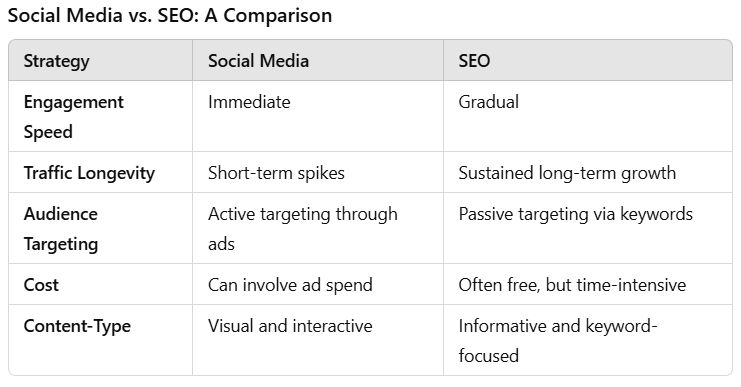Affiliate marketing is a fantastic way to earn passive income, but to truly succeed, you need to master one critical skill: driving traffic to your affiliate links. Whether you’re just starting out or looking to refine your strategies, this guide will equip you with actionable tips to boost your visibility, engage your audience, and maximize your earnings.
What Are Affiliate Links?
Affiliate links are unique URLs provided by merchants to track the traffic and sales generated by affiliates. These links include a tracking code that identifies you as the source of the referral. Here’s a breakdown of how they work:
- Tracking Purchases: When someone clicks on your affiliate link and completes a purchase, the tracking code ensures that you receive credit for the sale.
- Earning Commissions: Commissions vary by program and can range from a small percentage of the sale to substantial payouts for high-ticket items.
- Customizable Links: Many affiliate programs allow you to customize your links to better fit your branding or audience preferences.
Think of affiliate links as your virtual salesperson. They work around the clock, allowing you to earn even when you’re not actively promoting. By understanding how these links function, you can better strategize how to incorporate them seamlessly into your content.
The Affiliate Ecosystem: Key Players
Affiliate marketing involves a collaboration between three essential parties:
- Merchant:
- The merchant is the creator or supplier of the product or service.
- They offer affiliate programs to promote their offerings and expand their reach.
- Merchants benefit from increased exposure and sales without additional marketing overhead.
- Affiliate:
- The affiliate acts as a promoter, sharing the merchant’s products or services through various channels like blogs, social media, or email campaigns.
- Affiliates earn a commission for every successful sale or action generated through their links.
- Successful affiliates often build trust with their audience, which leads to higher conversion rates.
- Consumer:
- The consumer is the end-user who purchases the product or service.
- They benefit from discovering products that meet their needs, often accompanied by helpful reviews or insights from the affiliate.
Why It Works: This ecosystem thrives on a win-win relationship. Merchants gain access to a broader audience, affiliates earn income, and consumers find products they love. However, for this relationship to flourish, authenticity and transparency are crucial. Affiliates must genuinely believe in the products they promote to build trust and credibility with their audience.
Crafting Click-Worthy Content: Your First Step
Creating engaging and persuasive content is the foundation of driving traffic to your affiliate links. High-quality content not only attracts readers but also establishes trust and encourages them to take action. Here’s how to make your content stand out:
Why Quality Matters:
- Engages Readers: Well-crafted content captures your audience’s attention and keeps them coming back for more.
- Builds Credibility: High-quality, accurate information positions you as an authority in your niche.
- Drives Conversions: When readers trust your recommendations, they are more likely to click on your links and make purchases.
Tips for Killer Content:
- Use Numbered Lists and Bullet Points:
- Break complex information into bite-sized chunks.
- Improve readability and make your content more scannable.
- Highlight key points to draw attention.
- Create Catchy Headlines:
- A compelling headline can be the difference between a reader clicking your article or scrolling past.
- Use action-oriented phrases or questions that spark curiosity.
- Include Powerful Calls to Action (CTAs):
- A CTA (Call to Action) is a prompt that encourages your audience to take a specific action, like “Click here to learn more” or “Buy now.” Effective CTAs are clear, direct, and placed strategically within your content to guide readers.
Authenticity Is Key:
- Share personal stories or experiences to connect with your audience on a human level.
- Highlight why you genuinely believe in the product or service you’re promoting.
- Avoid overly promotional language; readers value honesty and transparency.
Learn from the Pros:
- Analyze successful affiliate articles for inspiration. Look for patterns like:
- Engaging introductions that hook the reader.
- Personal anecdotes that build trust.
- Clear and concise CTAs that guide the audience.
Remember, content is your voice in the digital world. Every article, blog post, or video you create is an opportunity to connect with potential buyers. Keep refining your approach, experiment with new ideas, and always strive for content that resonates with your audience.
Boosting Traffic: Social Media and SEO
Getting your content in front of the right audience is just as important as crafting it. Social media and SEO are two powerhouse strategies for driving traffic to your affiliate links. Let’s dive into how you can maximize their potential.
Using Social Media:
Social media platforms provide a direct way to connect with your audience, share your content, and promote your affiliate links. Here’s how to make the most of them:
- Platforms to Leverage:
- Instagram: Ideal for visual niches like fashion, fitness, or food.
- Pinterest: Perfect for evergreen content, crafts, and DIY projects.
- Facebook: Offers broad reach and community-building opportunities.
- TikTok: Excellent for engaging younger audiences with short, creative videos.
- Engagement Strategies:
- Post consistently to maintain visibility and build a loyal following.
- Use stories, reels, or live sessions to showcase products in real time.
- Engage with your audience through comments, direct messages, and polls.
- Collaborations and Influencers:
- Partner with influencers in your niche to expand your reach.
- Run giveaways or joint promotions to drive engagement and clicks.
SEO Strategies:
Search Engine Optimization (SEO) ensures that your content ranks well in search engines, making it easier for potential buyers to find your affiliate links.
- Keyword Research:
- Identify high-traffic, low-competition keywords relevant to your niche.
- Incorporate these keywords naturally into your headlines, subheadings, and body content.
- Content Optimization:
- Write compelling meta descriptions that include your target keywords.
- Use alt text for images to improve accessibility and SEO.
- Ensure your website is mobile-friendly and loads quickly.
- Link Building:
- Build backlinks from reputable sites to boost your domain authority.
- Interlink your articles to keep readers exploring your content longer.
By combining both strategies, you can cover immediate traffic needs while building a long-term presence online.
Analyzing and Optimizing for Success
Once you’ve started driving traffic to your affiliate links, analyzing and optimizing your efforts is crucial for long-term success. Here’s how to do it:
Why Analytics Matter
Analytics allow you to measure the performance of your content and affiliate links. Tools like Google Analytics provide valuable insights into user behavior, helping you identify what’s working and what needs improvement.
- What is Google Analytics?
- Google Analytics is a free web analytics tool that tracks and reports website traffic. It shows metrics like page views, bounce rates, time spent on pages, and conversion rates.
- For affiliate marketers, it helps track which links generate the most clicks and conversions, allowing you to optimize your strategy.
Key Optimization Techniques
- A/B Testing:
- A/B testing, also known as split testing, involves creating two versions of the same content or element (e.g., a headline or CTA) and comparing their performance.
- For example, test two different CTAs: “Buy Now” vs. “Get Your Deal Today.” The version with better engagement reveals what resonates more with your audience.
- Freshen Up Your Content:
- Regularly update older posts to keep them relevant and engaging.
- Add new statistics, improve formatting, or include updated CTAs.
- Track Click-Through Rates (CTR):
- Monitor how often readers click on your affiliate links. A low CTR might indicate poorly placed or unappealing links.
- Improve CTAs:
- Experiment with different CTAs in terms of wording, placement, and design.
- Examples: “Learn More,” “Start Saving Today,” or “Grab This Exclusive Offer.”
Building Trust and Authority
- Consistency:
- Maintain a regular posting schedule to stay top-of-mind with your audience.
- Ensure your tone and messaging align with your brand identity.
- Transparency:
- Clearly disclose affiliate relationships to build trust with your audience.
- Honesty fosters long-term loyalty and credibility.
By leveraging analytics, experimenting with new strategies, and maintaining authenticity, you can continuously refine your affiliate marketing efforts for sustainable growth and success.
Final Thoughts
Affiliate marketing is more than just sharing links; it’s about creating a meaningful connection between your audience and the products or services you promote. You can create a successful and sustainable affiliate marketing business by:
- Crafting high-quality, engaging content that builds trust.
- Leveraging social media and SEO to reach your target audience effectively.
- Regularly analyzing and optimizing your strategies for sustained growth.
Remember, patience and persistence are key. Not every strategy will yield instant results, but with consistent effort and a willingness to adapt, your affiliate marketing journey can become a reliable source of income. Keep learning, testing, and refining—your success is just a few clicks away.

